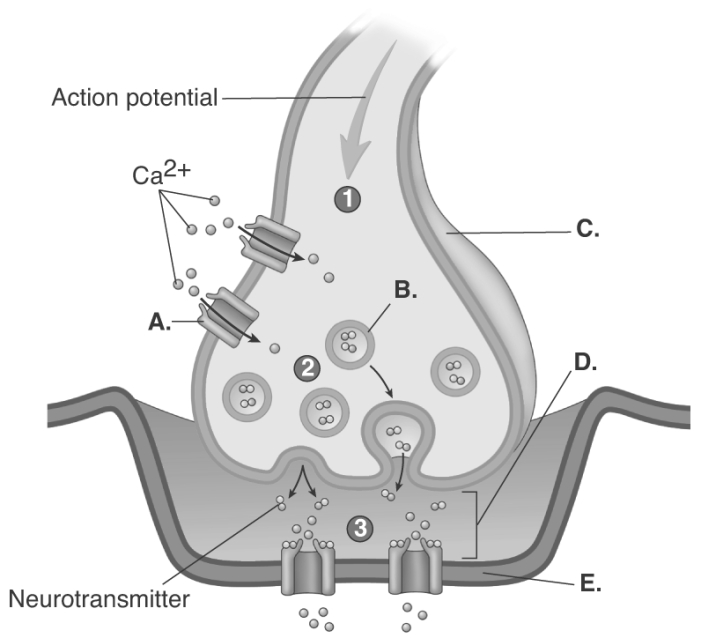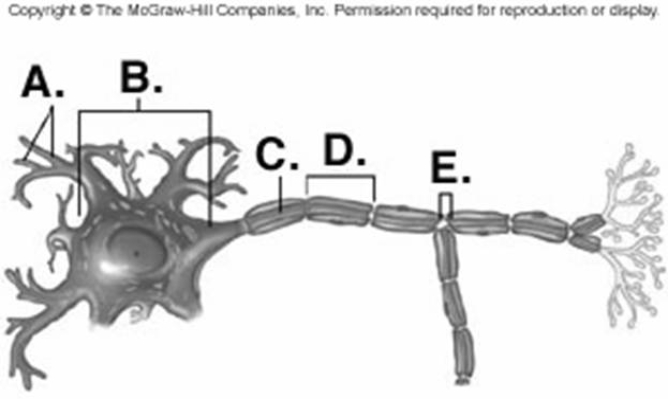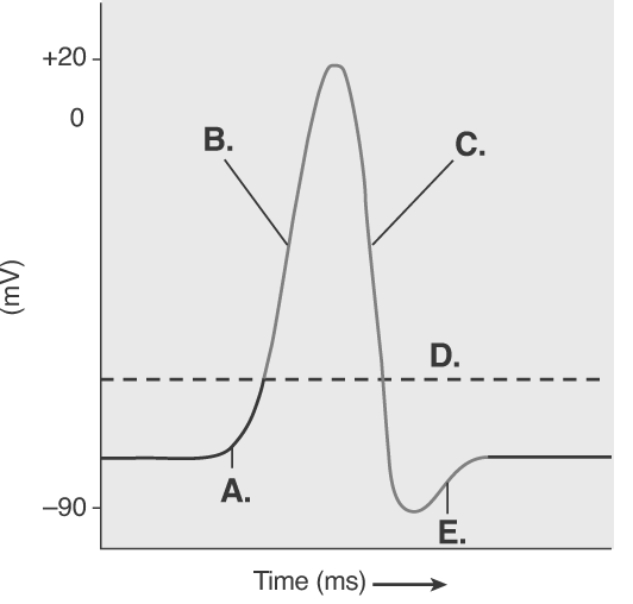A) influence function of blood-brain barrier
B) macrophages in CNS
C) produce cerebrospinal fluid
D) form myelin sheath around axons in CNS
E) form myelin sheath around part of the axon in the PNS
G) B) and E)
Correct Answer

verified
Correct Answer
verified
Multiple Choice
Gap junctions are functional __________ synapses.
A) chemical
B) electrical
C) potential
D) intracellular
E) neuromuscular
G) A) and C)
Correct Answer

verified
Correct Answer
verified
Short Answer
____________ are processes that conduct electric signals toward the cell body.
Correct Answer

verified
Correct Answer
verified
Multiple Choice
Which of the following statements regarding voltage-gated K+ channels is true?
A) These channels have only one gate.
B) These channels open more slowly than Na+ channels.
C) Once open, these channels remain open until repolarization is complete.
D) These channels are specific for potassium.
E) All of these statements are true.
G) B) and C)
Correct Answer

verified
Correct Answer
verified
Multiple Choice
The plasma membrane of a neuron is more permeable to potassium ions because
A) of its positive electrical charge.
B) there are more leak ion channels for K+ than Na+.
C) protein molecules cannot exit through the cell membrane.
D) calcium ions block Na+ and Cl- channels.
E) there are more leak ion channels for Na+ than K+.
G) A) and D)
Correct Answer

verified
Correct Answer
verified
Multiple Choice
Match the following concerning concentration differences across the plasma membrane. -higher inside cell
A) concentration of potassium
B) concentration of sodium and chloride
C) negatively charged proteins
D) sodium/potassium pump
E) plasma membrane is more permeable to this ion because of leak ion channels
G) A) and E)
Correct Answer

verified
Correct Answer
verified
Multiple Choice
The junction between two neurons is a
A) ganglia.
B) synapse.
C) fascicle.
D) node of Ranvier.
E) neuromuscular junction.
G) A) and B)
Correct Answer

verified
Correct Answer
verified
Multiple Choice
 -The figure is a process figure of the chemical synapse. What does "D" represent?
-The figure is a process figure of the chemical synapse. What does "D" represent?
A) postsynaptic membrane
B) synaptic cleft
C) synaptic vesicle
D) voltage-gated calcium channel
E) presynaptic terminal
G) B) and C)
Correct Answer

verified
Correct Answer
verified
Short Answer
Nerve fibers are also called ____________.
Correct Answer

verified
Correct Answer
verified
Multiple Choice
Which of the following is mismatched?
A) microglia - provide support for the neuron cell body
B) astrocytes - blood-brain barrier
C) oligodendrocytes - form myelin sheaths
D) ependymal cells - produce cerebrospinal fluid
E) ependymal cells - choroid plexus
G) B) and C)
Correct Answer

verified
Correct Answer
verified
Multiple Choice
What inhibitory neurotransmitter is blocked in strychnine poisoning?
A) glycine
B) acetylcholine
C) glutamate
D) adenosine
F) A) and D)
Correct Answer

verified
Correct Answer
verified
Multiple Choice
Synaptic vesicles contain neurotransmitters and are present in the
A) dendrites.
B) cell body.
C) axolemma.
D) presynaptic terminals.
E) trigger zone.
G) C) and D)
Correct Answer

verified
Correct Answer
verified
Multiple Choice
Gray matter on the surface of the brain is/are called
A) the cortex.
B) nuclei.
C) ganglia.
D) tracts.
F) B) and C)
Correct Answer

verified
Correct Answer
verified
Multiple Choice
The absolute refractory period ends when
A) inactivation gates of voltage-gated Na+ ion channels reopen.
B) activation gates of voltage-gates Na+ ion channels reopen.
C) the sodium-potassium exchange pump stops.
D) voltage-gated K+ channels open.
E) None of these choices is correct.
G) A) and C)
Correct Answer

verified
Correct Answer
verified
Multiple Choice
Damage to a postsynaptic membrane would
A) increase neurotransmitter release.
B) decrease the release of neurotransmitter.
C) increase neurotransmitter production.
D) interfere with the ability to respond to neurotransmitter.
E) destroy vesicles containing neurotransmitter.
G) D) and E)
Correct Answer

verified
Correct Answer
verified
Multiple Choice
When two or more presynaptic neurons synapse with a single postsynaptic neuron in the CNS, a(n) _______ pathway is formed.
A) convergent
B) divergent
C) reverberating
D) somatic
E) sensory
G) C) and D)
Correct Answer

verified
Correct Answer
verified
Multiple Choice
Saltatory conduction of an action potential means that
A) once one action potential is created, it moves down the axon.
B) the whole axon depolarizes at the same time.
C) one action potential stimulates the production of a new action potential at the adjacent site.
D) an action potential is conducted from one node of Ranvier to the next node.
F) All of the above
Correct Answer

verified
Correct Answer
verified
Multiple Choice
For the resting membrane potential, increasing the sodium ion concentration in the ECF results in
A) hyperpolarization.
B) depolarization.
C) hypopolarization.
D) little change in membrane potential.
E) There is not enough information to determine the results.
G) B) and C)
Correct Answer

verified
Correct Answer
verified
Multiple Choice
 -Identify structure "B" on the neuron.
-Identify structure "B" on the neuron.
A) Schwann cell
B) Node of Ranvier
C) neuron cell body (soma)
D) dendrites
E) axon
G) A) and E)
Correct Answer

verified
Correct Answer
verified
Multiple Choice
 -The figure illustrates the Action Potential. What does "A" represent?
-The figure illustrates the Action Potential. What does "A" represent?
A) repolarization
B) depolarization
C) local potential
D) threshold
E) afterpotential
G) A) and B)
Correct Answer

verified
Correct Answer
verified
Showing 41 - 60 of 155
Related Exams